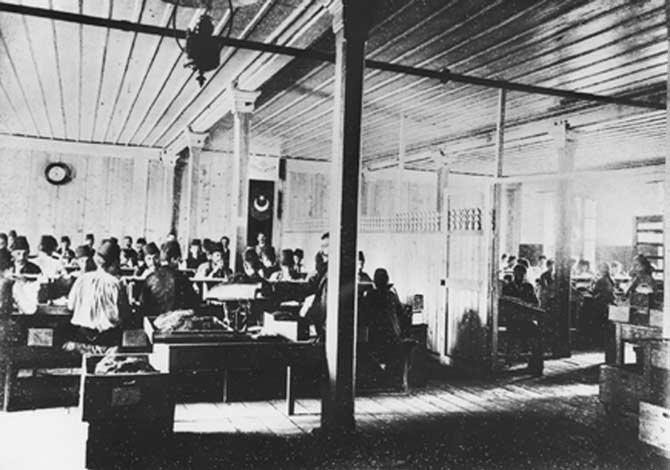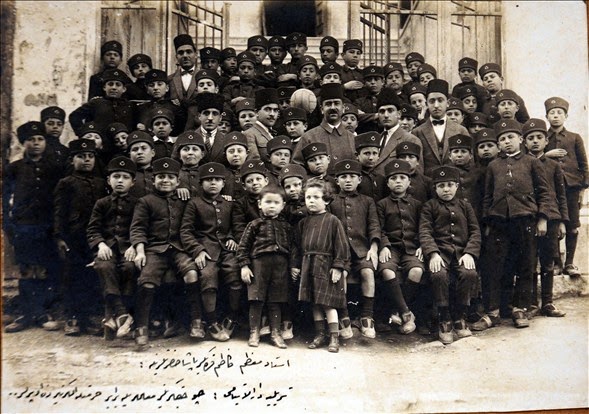163. Los Otomanos y los HabsburgosTraductores, diplomáticos, comerciantes, así como otras personalidades que generalmente caracterizan los contactos entre las diversas entidades políticas del mundo mediterráneo, sólo representan una de las muchas formas de interacción política, diplomática y comercial del mundo pre-moderno. En este episodio, Emrah Safa Gürkan precisamente explora el papel que jugaron los espías en la dinámica y cambiante relación entre el Imperio Otomano y el Imperio Habsburgo. Al examinar las conexiones informales existentes entre estos dos imperios, Gürkan trae al proscenio de la historia política, diplomática y militar, sujetos históricos cuyas historias fueron relevantes, justamente, por ocurrir tras bambalinas.
![]() | Emrah Safa Gurkan es profesor en el departamento de estudios internacionales de la Universidad İstanbul 29 Mayıs. Su trabajo se centra en la historia del Imperio Otomano y el mundo Mediterráneo pre-moderno. (vease academia.edu) |
![]() | Oscar Aguirre Mandujano es candidato doctoral en estudios del Cercano y Medio Oriente en la Universidad de Washington. Sus estudios se enfocan en la historia intelectual y literaria del Imperio Otomano durante los siglos quince y dieciséis. |
Citation: "Los espías del Mediterráneo en la Edad Moderna," Emrah Safa Gürkan, Oscar Aguirre-Mandujano, and Chris Gratien,
Ottoman History Podcast, No. 163 (9 July 2014) http://www.ottomanhistorypodcast.com/2014/07/los-espias.html
Listeners might also like:
#003
Ottoman-Habsburg Rivalry | Emrah Safa Gürkan
#162
Between Sultans and Kings | Claire Gilbert
#012
Ottoman Spies and Espionage | Emrah Safa Gürkan
#108
Dragomans | Emrah Safa Gürkan
#137
Across Anatolia on a Bicycle | Daniel Pontillo
BibliografíaEmilio Sola, Los que van y vienen: Información y fronteras en el Mediterráneo clasico del siglo XVI (Alcalá de Henares: Universidad de Alcalá, 2005).
Emrah Safa Gürkan, “Espionage in the 16th century Mediterranean: Secret Diplomacy, Mediterranean go-betweens and the Ottoman-Habsburg Rivalry” (Ph.D. Diss., Georgetown University, 2012).
Carlos Garnicer and Javier Marcos, Espías de Felipe II: Los servicios secretos del Imperio español (Madrid: La esfera de los libros, 2005)
Emilio Sola, “Moriscos, Renegados y Agentes Secretos Españoles en la Época de Cervantes”, OTAM 4 (1993): 331-362.
Emilio Sola and José F. de la Peña, Cervantes y la Berbería: Cervantes, mundo turco-berberisco y servicios secretos en la epoca de Felipe II (Madrid: Fondo de Cultura Economica, 1995)
Javier Marcos Rivas and Carlos Carnicer García, Espionaje y Traición en el Reinado de Felipe II: La historia de vallisoletano Martin de Acuña (Valladolid: Diputacion Provincial de Valladolid, 2001).
Emilio Sola, La Conjura de Campanella (Madrid: Turpin Editores, 2007).
Romano Canosa and Isabello Colonnello, Spionaggio a Palermo: Aspetti della Guerra Secreta Turco-Spagnola in Mediterraneno nel Cinquecento (Palermo: Sellerio Editore, 1991).
Percy Kemp, “An Eighteenth Century Turkish Intelligence Report” International Journal of Middle East Studies, 16 (1984), pp. 497-506.
Géza Dávid and Pál Fodor, “Ottoman Spy Reports from Hungary”, in Turcica et Islamica. Studi in Memoria di Aldo Gallotta, I, a cura di Ugo Marazzi (Napoli: Università degli Studi di Napoli “L’Orientale”, 2003): 121-131.
Emrah Safa Gürkan, “The Efficacy of Ottoman-Counter-Intelligence in the Sixteenth Century”, Acta Orientalia Academiae Scientarium Hungaricum, 65/1 (2012), pp. 1-38.
Diego Navarro Bonilla, “Espías Honorables, Espías Necesarios: De la Información a la Inteligencia en la Conducción de la Política y la Guerra de la Monarquía Hispánica”, in Béatrice Perez (ed.), Ambassadeurs, Apprentis Espions et Maîtres Comploteurs : Les systèmes de Renseignement en Espagne à l’époque Moderne (Paris : Presses de l’université Paris-Sorbonne, 2010), pp. 31-47.
Juan R. Goberna Falque, Inteligencia, Espionaje y Servicios Secretos en España (Madrid : Ministerio de Defansa, 2007)
Rubén González Cuerva, “Mediterráneo en tregua: Las negociaciones de Ruggero Marliani con el Imperio Ottomano (1590-1592)”, in Manuel Reyes García Hurtado (ed.): Actas de la X Reunión de la Fundación Española de Historia Moderna (Santiago de Compostela: Universidad, 2009), Vol. 2, pp. 209-220.
Michèle Escamilla, “Antonio Rincón: Transfuge, Espion, Ambassadeur et Casus Belli au temps de Charles Quint” in Béatrice Perez (ed.), Ambassadeurs, Apprentis Espions et Maîtres Comploteurs : Les systèmes de Renseignement en Espagne à l’époque Moderne (Paris : Presses de l’université Paris-Sorbonne, 2010), pp. 87-160.
Enrique García Hernán, “The Price of Spying at the Battle of Lepanto”, Eurasian Studies, II/2 (2003): 227-250.
Enrique García Hernán, “Espionaje en la Batalla de Lepanto”, Historia 16, 27 (2003): 8-41.
Miguel Angel Echevarría Bacigalupe, La Diplomacia Secreta en Flandes, 1598-1643(Leioa-Vizcaya: Argitarapen Zerbitzua Euskal Herriko Unibertsitatea, 1984).
Lucien Bély, Espions et ambassadeurs au temps de Louis XIV (Paris: Libraire Arthème Fayard, 1990).
Paolo Preto, I Servizi Segreti di Venezia (Milano: Il Saggiatore, 1994)
Alan Marshall, Intelligence and Espionage in the Reign of Charles II, 1660-1685 (Cambridge: Cambridge University Press, 1994).
David Salinas, Espionaje y Gastos Secretos en la Diplomacia Española (1663-1683) en sus Documentos (Valladolid: Ámbito Ediciones, 1994.
Carlos J. Carnicer García and Javier Marcos Rivas, Sebastián de Arbizu, Espía de Felipe II: La diplomacia secreta española y la intervención en Francia (Madrid: Editorial Nerea S.A., 1998).
Maria José Bertomeu Masiá (ed.), Cartas de un Espía de Carlos V: La Correspondencia de Jerónimo Bucchia con Antonio Perrenot de Granvela (València : Universitat de València, 2006).
Juan R. Goberna Falque, Inteligencia, Espionaje y Servicios Secretos en España (Madrid : Ministerio de Defansa, 2007).
Jean-Michel Ribera, Diplomatie et Espionnage: Les Ambassadeurs du Roi de France auprès de Philippe II du traité du Cateau-Cambrésis (1559) à la mort de Henri III (1589) (Paris : Honoré Champion Editeur, 2007).
David Kahn, The Codebreakers: The Story of Secret Writing (London: Weidenfeld and Nicholson, 1967)




































